Spirit of the North and Lost Ember are both undeniably beautiful games. Each has its own intensely gorgeous graphical style, emotionally charged soundtrack, and simple (yet effective) story.
If you’ve played both (and maybe even if you haven’t), it’s easy to see that they’re quite similar. However, there are a lot of differences between the two games, as well, and I wanted to touch on that in this post.
Never played either of these games before? Maybe this Spirit of the North vs Lost Ember comparison will help you decide if and which one you should play, since I’ll also tell you which I liked more at the end.
What are Spirit of the North and Lost Ember?
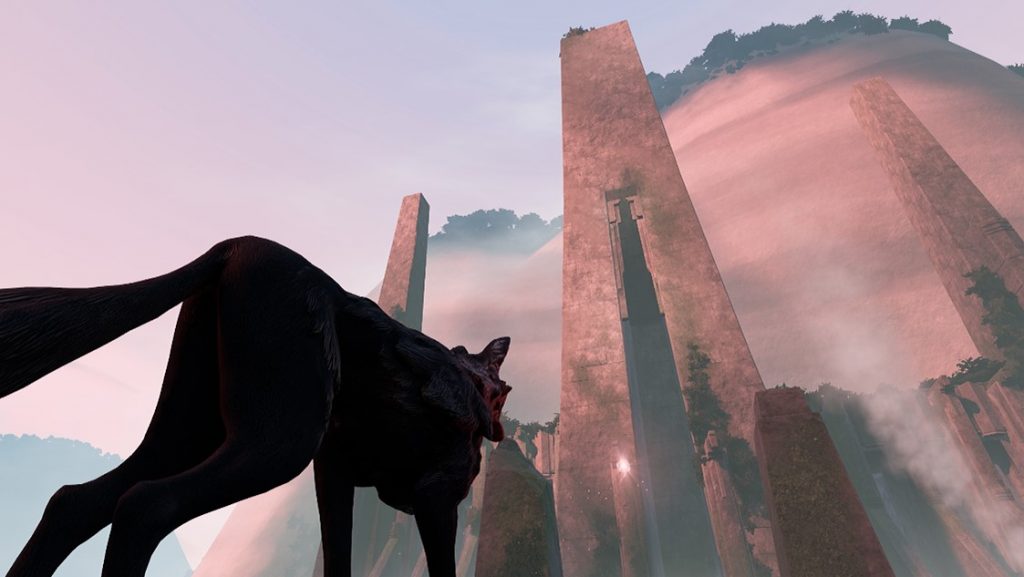
If you’ve never heard of Spirit of the North and Lost Ember before, it’s probably wise to start by explaining what they are.
Both are adventure games that focus on an animal protagonist. The stories behind each animal’s journey are different, but the overall feel for the games is quite similar.
In either one, you will explore abandoned cities, plunge through gorgeous wilderness vistas, and solve relatively simple puzzles. Neither has any combat and you don’t have to worry about damaging your avatar in-game. The atmosphere is relaxing and unsophisticated, which may not appeal to everyone.
I should also say at this point that there is now a spoiler alert in effect. Much of this comparison won’t center on the stories and their twists, but I may touch on them later.
Similarities
Animal Protagonists
In my opinion, the most striking similarity is the fact that both Spirit and Lost Ember have main characters who are animals. (At least, this is what caught my eye about them first – you might have been drawn to them for any number of other reasons.)
Even more striking, both main characters are of the canine variety. Lost Ember has a main character who’s a wolf, and Spirit features a red fox.
You’re not limited to playing only the wolf throughout Lost Ember, but that’s something I’ll get into more later. The point is that both will put you into the paws of one canine or another.
If you think this means that the characters will be unrelatable, you couldn’t be more wrong. Both protagonists have personalities, although I’d go so far as to say Lost Ember’s wolf displays her personality much more than Spirit’s fox.
Guide Characters
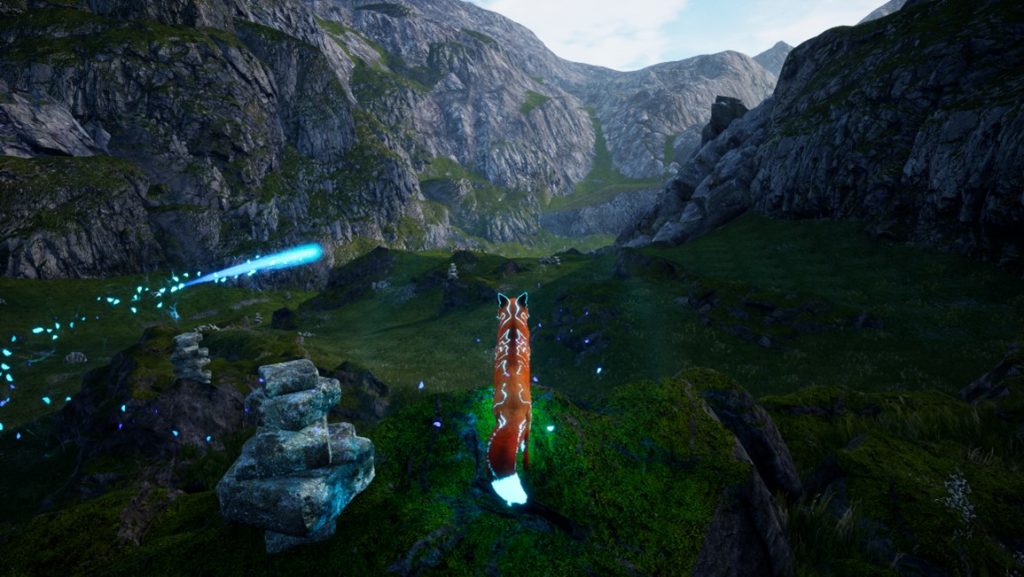
If you look at trailers for both games, you’ll notice something else they share: a guide character that looks like a small spark. In Lost Ember, this spark is red. In Spirit of the North, this spark is blue.
Such superficial differences in color aren’t important. Both have floating spirit guides that lead you through their prospective worlds.
One key difference between them is that Spirit’s guide occasionally takes on its real form: a ghostly blue fox. At the end of the day, though, these sparks both play the same role (although Lost Ember’s is more nuanced), and that’s why I’m putting them under similarities.
Relaxed Gameplay
The complete lack of pressure in either game is another thing they have in common. Although the story in Spirit does have your character face grave wounds and death, there is nothing you can do in either one in the course of regular gameplay that will harm you.
I’ve plummeted from the tops of mountains, fell into deep bodies of water, leapt from tall stairwells, came crashing down from the sky…nothing harms you. In a similar vein, there is also no such thing as combat in either game.
Both are purely exploratory games. You are not timed, threatened, fought, or hurt. These are essentially walking simulators. Whether you find that satisfying or not is up to you; as I’ve said before in my reviews of walking sims, I don’t personally mind the lack of “interesting gameplay” as long as the story is good enough.
Read Next: Spirit of the North Review: My Unrefined Impressions
Exploration
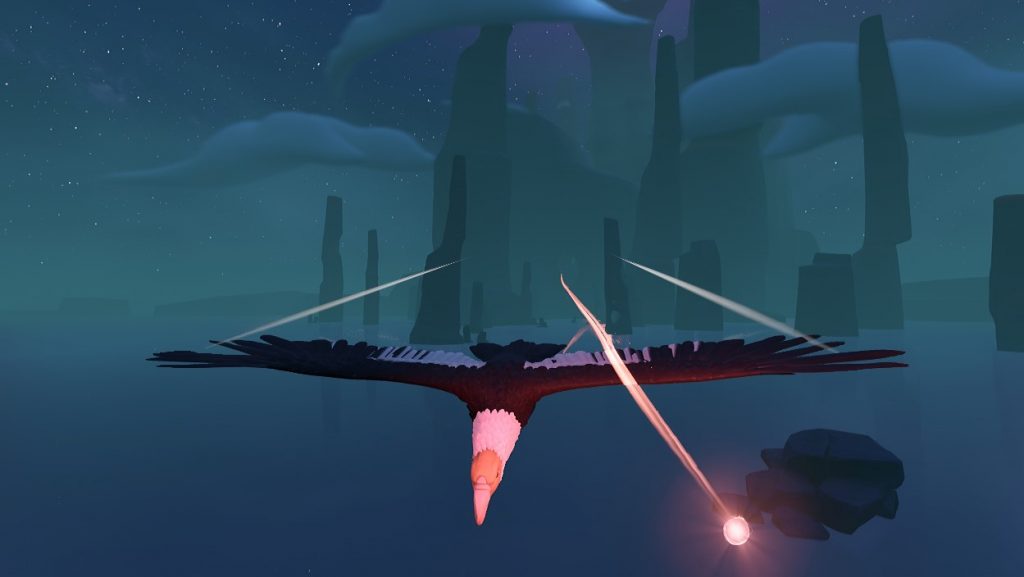
Exploration is a key theme and core mechanic in both games. They may not have combat, character customization, or an extensive cast of NPCs to grow attached to, but they do let you wander beautiful settings and admire the scenery all the while.
That being said, the exploration is quite a bit more extensive in Lost Ember. This is because the game allows you to take control of a decently large range of animals. Flying, swimming, burrowing underground, and climbing up steep mountain paths are all things you’ll be able to do.
You’re a little bit more limited in Spirit of the North because, well, you’re just a fox the entire time. But you will eventually unlock abilities such as dashing and teleporting short distances that broaden your exploration horizons a little.
Collectibles
If all you had to do in a game – even in a walking simulator – is just walk around, you’d probably get bored pretty quickly. This is why many walking simulators, including Lost Ember and Spirit, include collectibles you can hunt for along the way.
That’s a siren song to perfectionists like me. In fact, I still have Spirit of the North installed on my PC because I keep telling myself I’m going to get back to it someday and see if I can find all the collectibles.
Now, the specific things you can collect differ between the games. Lost Ember will have you searching for a variety of mushrooms and artifacts. Spirit of the North, on the other hand, will keep you digging for monk staffs that you can use to release the spirits of monks scattered throughout the game.
Puzzles
Another thing that will keep you interested in either game is the presence of puzzles. To be honest, though, the puzzles are relatively simple – a complaint I know other players have had about both games.
In Lost Ember, the puzzles are usually about the player deciding which animal is the best to navigate a particular type of terrain. For instance, later on in the game, you’ll have to climb up steep mountains – a task the nearby mountain goats are certainly up for. The problem with this setup is that the moment you’re confronted by an obstacle, a new type of animal is suddenly nearby, so it’s usually obvious to figure out how to progress.
Spirit of the North’s puzzles are bit more in-depth, I think, but they’re still easy. You’ll usually have to figure your way out across a range of unstable platforms or find out how to get through a door before it closes. The variety is a bit more entertaining than with Lost Ember’s puzzles, and there was honestly one point in the game where I was a little stumped.
No Humans
The main characters in Lost Ember and Spirit of the North are animals. You won’t encounter living people in either game.
That being said, there are, in a way, human NPCs scattered throughout them. In Lost Ember, you’ll encounter humans in flashbacks. Spirit of the North has the spirits of humans spread across its story for you to set free as you collect staffs and return them to their owners’ bodies.
Technical Issues
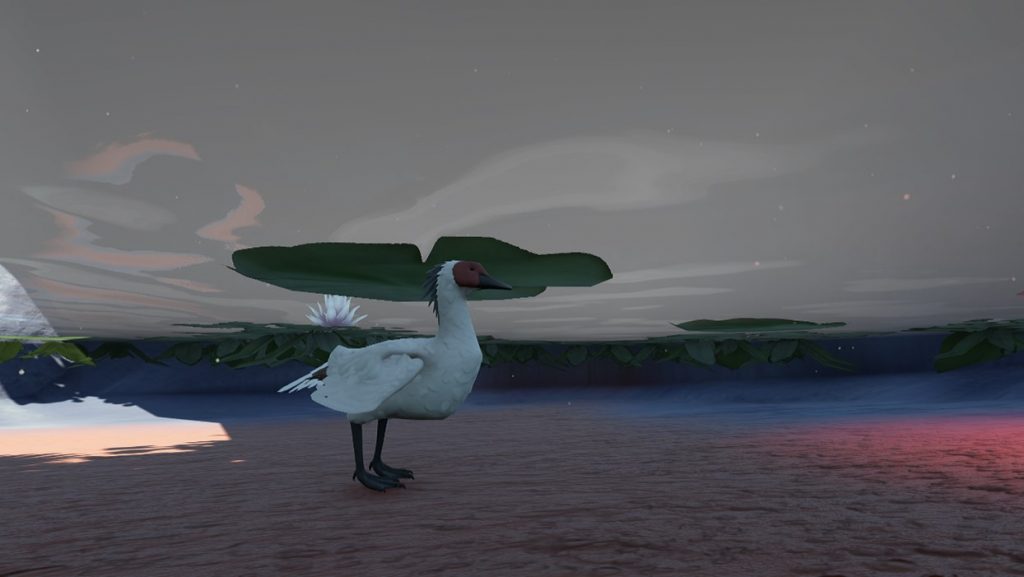
As bad as I feel bringing it up, another thing I noticed about these games is that they both have minor technical issues. In my opinion, though, Lost Ember’s are a little worse because they’re so un-immersive.
Throughout Lost Ember, you’ll run into animals that behave strangely or move unnaturally. For instance, I found a flock of ducks flying through the air without moving their wings. I also found some ducks standing around underwater.
There are many more animals that appear to be frozen in place entirely, too. I’ve included a screenshot of the underwater ducks I mentioned above.
With Spirit of the North, there’s a minor visual “issue,” as well. The problem is with the fox’s hit box, which is absurdly large. Because of its hit box, you can stand close to a ledge but float in the air.
I understand why they did that. A larger hitbox is much more forgiving, especially in a platformer where you have to leap and climb onto tiny platforms. Nevertheless, it looks unnatural, and given how easy the game is, there is no need to have such a massive hitbox.
Differences
Graphical Styles
When you first look at these two games, you’ll pick up on one immediate difference: their graphics. They couldn’t be more different when it comes to visual style.
Lost Ember has a stylized, vaguely cartoony aesthetic. It’s easy to imagine a children’s movie being made with its cel-shaded look.
There’s nothing wrong with this design; in fact, it may end up aging better than photorealistic games. To understand what I mean, think about the games in the past that were supposed to have “realistic” graphics. Limited by the hardware of their time, they simply look dated now.
Spirit of the North takes the photorealistic approach. Everything is lovingly rendered with extreme detail, down to individual clumps in the fox’s fur. If you can crank your graphics settings up to Ultra on whatever you’re playing, I strongly recommend it because there’s a lot to admire.
Which one you like more is entirely a matter of personal preference. I like the way Spirit looks more, but like I said previously, it may not hold up as well in several years.
Settings
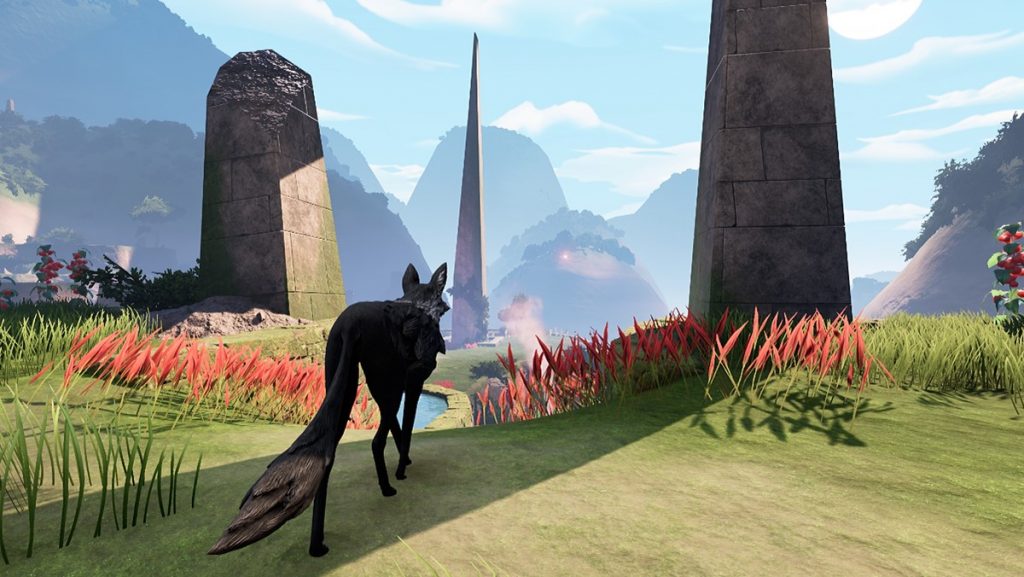
The two games take place in wildly different settings. If you were to play one right after the other, this is one aspect that makes either one distinct.
I don’t know off the top of my head if Lost Ember was based on a particular region or country. However, it takes place largely in tropical and jungle settings full of vibrant green plants and glistening water. There are occasional areas that are different, such as a desert area and snowy mountaintop, but for the most part, be prepared to explore a lot of jungle.
Spirit of the North is heavily inspired by Iceland. There are large swaths of windswept, snowy plains for you to traverse, framed by white-shrouded mountains in the distance. To keep you from getting bored by all that snow, though, there are plenty of green fields, abandoned cities, and rivers for you to explore, as well.
Stories and Themes
As a reminder, there’s a spoiler alert for this comparison. There will especially be spoilers in this section since I’ll be discussing the plots of both games.
Of the two games, Spirit of the North has the simplest storyline. You are playing as a fox who is being guided by a fox spirit on a mission to clear a mysterious plague from the ruins of a civilization. All the people have seemingly been killed by this plague, but the sense of tragedy is brightened with a more powerful sense of hope – especially as your efforts return the land to its beautiful, pristine state and you even encounter the lost people in a kind of spirit world or afterlife.
Lost Ember’s story is much more complex. You are ostensibly playing as a wolf, who you quickly find out is inhabited by a sort of reincarnated spirit of a woman named Kalani. Guided by a spark-like spirit, you’re on a mission to uncover the circumstances surrounding your death and hopefully earn your way into the City of Light, which is essentially Kalani’s culture’s heaven.
There are a lot of twists and turns in Lost Ember. If I could boil down the entire story into a word or two, I would say that it’s about redemption and forgiveness. You start off thinking that Kalani is the one who needs forgiveness, based on remembering how she instigated a revolt that led to the destruction of her people’s city and religious temple.
But as you progress in the game, you realize that, while extreme, Kalani’s actions were justifiable. She had seen the oppression of the poor in her society for years. Her father, Atevo, who was a royal guard, often partook in the continued oppression of the less fortunate by orders of the emperor. This caused a division between Kalani and Atevo, which is only exacerbated when he is ordered to kill Kalani’s wife in order to (unsuccessfully) quash her rebellion before it can begin.
A twist at the end of the game reveals to you that the spark guiding you is Atevo. It is not Kalani that needs forgiveness to enter the City of Light – it is Atevo. Can Kalani possibly bring herself to forgive him?
I’ll leave that up to you to discover. As you can see, though, the plot for Lost Ember is significantly more in-depth than Spirit of the North. Personally, however, I felt as if some of the twists in Lost Ember were a little forced.
Compatible Platforms
Depending on the gaming systems you have available, you may not even be able to play one or the other. There’s much overlap between them, though, so chances are high that you can play both.
Lost Ember is available on the PS4, Xbox One, Switch, and PC. Spirit of the North can be played on PS4, PS5, Xbox Series X, and PC.
Spirit of the North Character Abilities
For the most part, the gameplay between Lost Ember and Spirit of the North will feel more alike than different…but there are still a few technical differences.
The first one that came to mind for me was the fox’s abilities in Spirit of the North. As you progress through the game, you’ll unlock more powers, such as dash or the ability to take on a spirit form that separates from your body and can walk through obstacles.
This makes a lot of sense for the game. Unlike Lost Ember, where you’ll get variety from the range of animals you effectively possess, Spirit of the North only puts you in the role of a single animal: a red fox. They had to do something to keep you from getting bored.
Animals in Lost Ember don’t have any sorts of special powers. The abilities they have are what the animal in question would naturally have. For example, playing as a hummingbird allows you to fly and hover. Jumping into the body of a fish makes it possible for you to travel underwater.
Lost Ember Flashback Mechanic
Lost Ember’s story requires you to be able to dive into the past at various points. This is integral to revealing crucial plot points to you.
That’s why it has an interesting flashback mechanic. Every once in awhile, you’ll stumble upon these frozen scenes in the landscape. Howling at them will reveal a memory that your character had forgotten until that point.
You can review the memories as often as you like. It’s an interesting way of slowly feeding you the important parts of the story.
Lost Ember Multiple Controllable Animals
I’ve touched on this a few times, but it’s worth including in the list of differences, anyway. In Spirit of the North, you will only ever play as one animal: a red fox.
Sometimes, there might be something different about said fox. It may be injured. At other times, you’ll play as a spirit fox instead. It’s still a fox.
In Lost Ember, you’ll leap from animal to animal to navigate the map. Your character’s consciousness basically has the ability to cast itself into different animals, so while you are the same “person,” you can have different bodies at different areas in the game.
I don’t know that I could list every animal in the game, but some that I remember include parrots, ducks, fish, yaks, tortoises, and mountain goats. The way you move around completely changes based on the animal, and this helps keep the game feeling fresh and interesting.
Lost Ember Dialogue
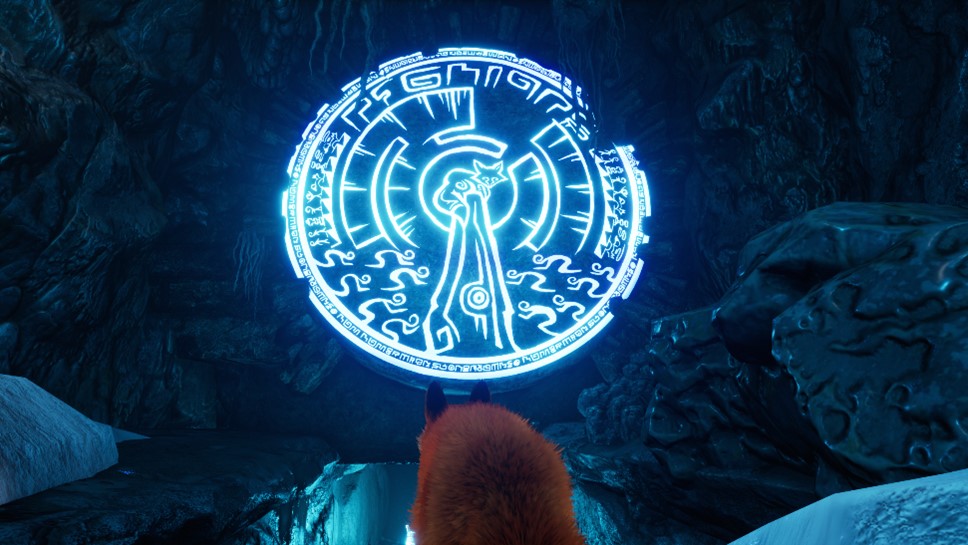
Spirit of the North is completely devoid of dialogue. The entire story is conveyed through murals, pictures, and body language.
If you think that makes it difficult to understand what’s going on, that’s certainly not the case. I’m no genius, and I could still grasp the story fairly easily. I know there were some people who complained that the story is too simple, and I imagine that’s probably to make it easier to get across without using words.
Lost Ember, however, does have dialogue. Quite a lot of it, in fact. Your spirit “guide” talks to you frequently, and whenever you have a flashback, you hear dialogue from the memories.
I believe you can turn the dialogue off if you’re worried about it disrupting the peaceful atmosphere. The game does warn you that this may make it a bit more difficult to grasp the story, though.
Which One Should You Play Next?
Do you find yourself torn between these two gorgeous games? How will you ever decide which one you should play next?
Honestly, that’s a hard question – Lost Ember and Spirit of the North seemingly have more in common than they do different. If you like one, I feel pretty confident in saying you’ll enjoy the other.
With that in mind, there are a handful of distinguishing difference that may help you determine which one to play first. (Because I honestly do think you should try both if you’re going to try one!)
Spirit of the North is a better starting point if you’re more into photorealistic settings. If you’re hoping to lose yourself to the exploration, I think the realistic portrayal of an Iceland-like setting will be easier for you to immerse yourself in. Plus, the lack of dialogue keeps you in a relaxed, unfocused state.
I’d recommend Lost Ember if you’re more concerned about a complex story. The dialogue, flashbacks, and intricate culture woven into the game will keep you intrigued if you’re a sucker for tear-jerking character development.
My personal preference is for Spirit of the North. I felt it was a bit more relaxing, and that it lacked the persistent visual bugs Lost Ember had.
